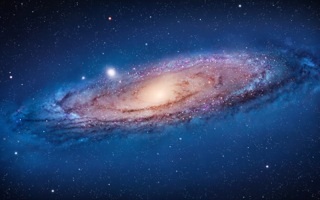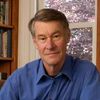This is the 12th in the series "Religion and Science: A Beautiful Friendship."
"Live your life as if there are no miracles and everything is a miracle." -- Albert Einstein
The Miraculous
 The allure of mystery points directly to the nature of reality as open and infinite. It offers a foretaste of our real power within that reality as its discoverer and knower.
The allure of mystery points directly to the nature of reality as open and infinite. It offers a foretaste of our real power within that reality as its discoverer and knower.
But because of its connection with power, the miraculous seduces some into magical thinking. Both the fraudulent and the profound appear at first to violate our expectations. Science has learned to examine puzzling new phenomena from all angles to see if there isn't a way of accounting for them from known principles. New evidence may force scientists to revise their best, most comprehensive theories, but only as a last resort. This essential feature of science is captured in an oxymoronic description that scientists sometimes apply to their methodology -- radical conservatism.
The appeal of the mysterious has its origin in our desire to free ourselves from any "box" in which we find ourselves. Our vicarious delight in the escape artist's success is an expression of our will to freedom.
But our true powers lie closer to hand, and may be tapped to the extent that we understand how Nature works. Miracles do not consist of violations of Nature's laws but rather of aligning ourselves with them with such fidelity that we partake of her miraculous powers.
Hearts and Minds
Despite some egregious moral lapses and its losing streak when it aligns itself with discredited science, religion still holds a special place in the hearts of many. This is partly attributable to its genius for multitasking. Religion consoles and guides. It commends and condemns. It awes and humbles. It helps believers to endure the unendurable.
One need not belong to a particular faith to see that shared religious beliefs promote social cohesion which in turn facilitates cooperation. A group's ability to respond to natural or manmade catastrophes depends on nothing so much as unity. As Lincoln, quoting Jesus, noted, "A house divided against itself can not stand." Shared religious beliefs help hold the house together.
On the personal front, religion helps to take us out of ourselves so -- as witnesses to our own behavior -- we can see how we're affecting others and make adjustments. Above all, religion affirms human dignity and helps us cope with the indignities and losses that invariably befall us.
When it comes to personal transformation, religion has not only made fundamental contributions in its own right, but has also inspired great art and literature. Classics by Dante, Cervantes, Shakespeare, Milton, Goethe, Melville, Balzac, Dostoevsky and others serve as handmaidens to the world's holy books.
Examples of religious insight into personal change can be found in all the religious traditions, but I'll cite only two, drawn from Christianity and Hinduism, respectively -- the doctrines of resurrection and reincarnation. As applied to the physical body, these tenets are arguable. Nonbelievers reject them outright and even many believers take them metaphorically. That some people do take such doctrines literally does no harm to those who do not, and since evidence is hard to come by, this is a realm where agreeing to disagree is not an inexcusable cop out.
Interpreted metaphorically, however, and applied to modeling, these ideas are arguably profound. Models must "die to be reborn," none more dramatically than our self models or identities. The disintegration of a current identity is often experienced as a kind of death. The struggle to come to terms with the loss of a partner or child, or with a sudden change in our status or health, can feel like what St. John of the Cross described as a "dark night of the soul."
From the modeling perspective, resurrection and reincarnation can be understood not as migrations of the soul, but rather as metamorphoses of the identity. In today's rapidly changing world, most of us experience several distinct changes of identity. Yes, the process occurs within one's lifetime rather than connecting one life span to another as some theologies suggest. Many find reassurance for life's most hazardous passages in the Bible, the Talmud, the Quran, the Upanishads and Sutras. That the core teachings in these books still serve as illuminating and consoling guides to self-transformation is why they're deemed holy.
During those perilous passages where one identity dissolves and another crystallizes in its place, we are at maximum vulnerability, like a crab molting its shell. When a familiar identity disintegrates, we may doubt our worth. At times the community we normally depend on for support, even the fellowship of friends and family, can fail us, and we may find ourselves defenseless and alone.
Religion serves when it illuminates the process through which we morph from one identity to another. Religion combines art, literature and theater in the context of communal fellowship to effectively transmit truths about the identity and its transformation that help many maintain their balance in a world in flux. The future of vocations that can help people through the whitewater of traumatic change is secure.
Foundation for a Beautiful Friendship
The preceding posts provide a basis for rapprochement between science and religion. Here are some of its principal elements:
- Both science and religion make use of educated guesses to create theories, devise rules and build models. The vast majority of these scientific and religious models -- including our identities (or self models) -- are found wanting and must be revised or discarded.
- But human fallibility does not invalidate the process. We're well advised to "try, try again," because one success, which may then spread via imitation (mimesis), makes up for countless failures.
- The alternative to fundamentalism -- whether of the religious, political or scientific variety -- is not relativism nor obscurantism, it's modeling.
- Both scientific and religious precepts ultimately rest on painstaking observation. (More on this in the next post.)
- The models of religion, politics, the arts and the sciences are the DNA of civilization.
- Both science and religion can reduce suffering: science by alleviating material wants (e.g., hunger and disease), religion by cultivating virtues (e.g., kindness and compassion).
- Both religion and science sometimes cling stubbornly to their mistakes.
- The process of discovery -- though it goes by the different names of eureka, epiphany, revelation and enlightenment -- is basically the same in all fields. An occasional ah-ha punctuates a lot of ho-hum.
- Both scientists and religious leaders have sometimes put institutional interests above the public interest. Although this is self-serving, condemnation is tempered by the fact that both science and religion have also produced leaders who've sacrificed themselves for truth, beauty and justice.
- Science gives us reason to think that hunger, disease and scarcity can be overcome. Religion harbors the hope that peace is attainable. In the remaining chapters, I'll try to show how, together, science and religion could deliver on the dream of sufficiency and decency.
